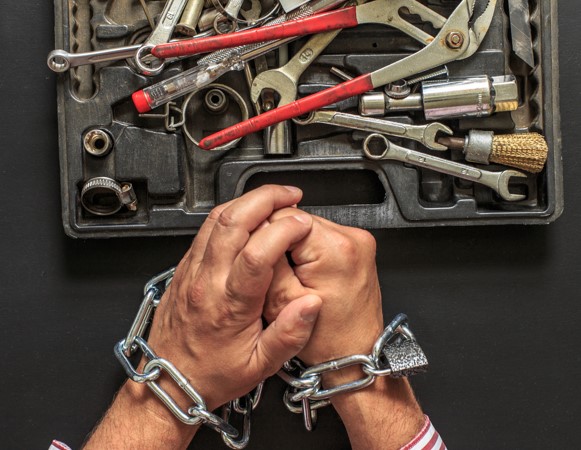

We’ve all heard of the three R’s-Reduce, Reuse, Recycle. Right to repair is a movement that focuses purely on the Reduce and Reuse part of the three R’s and is focused on personal devices. With tech moving more and more towards a more unified, less repair friendly future, the amount of e-waste that the average consumer has ballooned in the past few years, going from 5 to 7 kilograms a year. While this doesn’t seem like much, it’s a 50% increase in waste production, which isn’t good. So, let’s talk about right to repair.
At its core, Right to Repair aims to make personal electronic devices easier to repair by the average consumer. That would mean manufacturers releasing repair guides for free, increasing accessibility of parts and other measures. Right to repair is one of the most promising movements in the sustainable development sphere recently, since it’ll allow us to maintain the same standard of life while being more ecologically sound. However, there’s an issue. The multi-billion and trillion-dollar companies don’t want it.
It makes some semblance of sense when one thinks about it. Late-stage capitalism calls for ever-growing profits from companies, which can’t be generated if people are hanging on to their products for longer. It’s the reason why Apple switched to an SOC on their laptops or why Samsung glues their batteries in. When these devices invariably fail, they’re going to need more and specialized technicians, who will ask for larger sums of money for the repair. This will push the customer towards buying a new, shiny device altogether instead of a device which could’ve lasted slightly longer. It’s also why all these companies are so vehemently against right to repair, having lobbied their way into getting anti-right to repair legislation passed in multiple states in the US, including New York. Louis Rossman did a video on this, content warning for profanity.
Auto manufacturers aren’t pro-right to repair either. Everyone has heard of John Deere and their subscription-based tractors, but not enough people have heard of Tesla using what is essentially a software lock to lock pre-existing features behind a paywall or BMW’s subscription-based seat heating. The thing that customers were mad about wasn’t the extra money they were having to pay, but the fact that these features were already inbuilt into their cars instead of having the savings passed onto them. Tesla cars have also been notoriously anti-right to repair, with servicing and repair only being properly done at official Tesla stores.
With phones, there is no bigger offender than Apple. Apple hardware-locks screens and other components of phones which could be otherwise easily replaced, which extends to even the battery, the most commonly replaced component in all phones. This video from Hugh Jeffreys dives into the nitty-gritty of repairing an apple phone. Even their laptops aren’t any better. The newer macs have systems on a chip, which is about as repairable as the motherboard on a phone. If something goes wrong with it, the only way to fix it is to completely replace it. The storage and RAM are both soldered on which makes upgradeability not an option either, which cuts down the life of these devices even further.
However, it’s not all doom and gloom either. Plenty of manufacturers still make relatively easy to repair electronics, with notable examples being Framework, Lenovo and HP for laptops and Google for mobile phones. Gaming laptops remain upgradeable in an age where RAM is soldered since these companies know their userbase rather well. The PS5 is surprisingly repairable, with all components accessible to anyone with the know-how and an online guide. HP makes teardown guides on their YouTube channel for all their laptops, which is a massive step in the right direction.
The goal of right to repair isn’t to make the average consumer a technician. It’s to give the average consumer the choice to repair their own products or take their device to an independent third party who’ll do it for them instead of having to rely on first-party stores costing an arm and a leg. Right to Repair is a movement that could only result in a net positive for the planet, bringing down the average emissions greatly.
Manufacturers who hide behind the risk of liability from a repair gone wrong, would be a lot more convincing if they fronted up with repayments when things do go wrong even without any direct involvement by an external technician.
Contributed by Yash Singh, who is doing his B.tech in Computer Science at the Manipal University, Jaipur.
1. The mandate for blending Compressed Biogas (CBG) with natural gas has come into effect…
Andhra Pradesh is striving towards greening its energy sector with quite some speed. In a…
With an objective to bolster India’s green energy goals, a Tripartite Agreement has been signed…
The Union MNRE Minister Pralhad Joshi launched the Green Hydrogen Certification Scheme of India (GHCI)…
India’s energy conglomerate Bharat Petroleum Corporation Limited (BPCL) has commissioned a 5MW green hydrogen plant…
In a historical development, the European Space Agency (ESA) has successfully launched its pioneering ‘Biomass’…